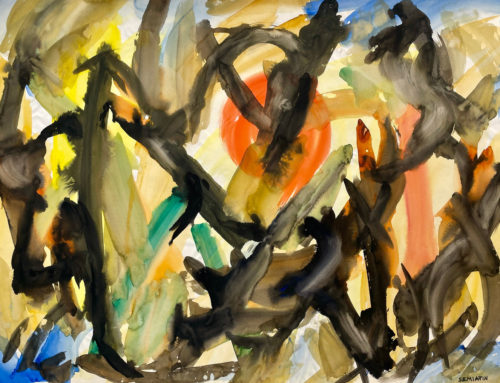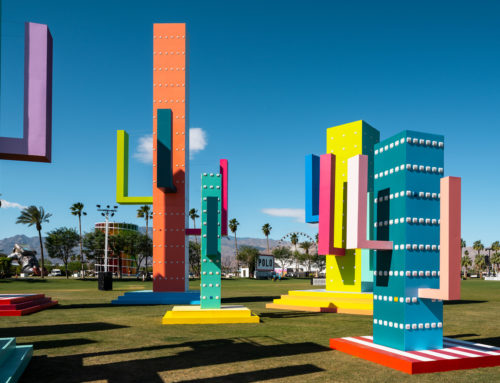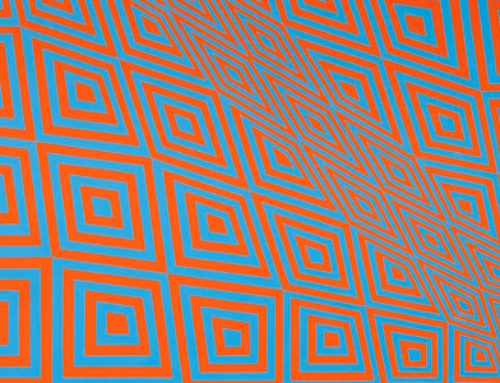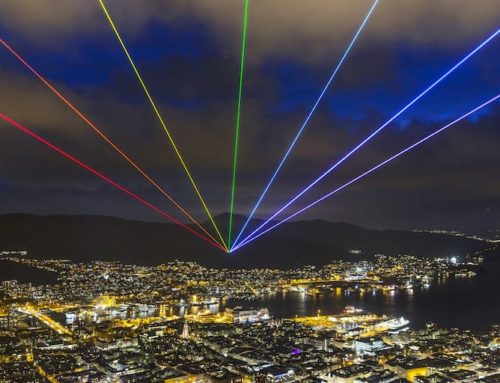The sweet smell of fresh baked goods wafts from Las Tres Conchitas on the corner of Sixth Street and Vine Avenue in downtown Coachella while locals file into Jalisco for lunch across the street. On the same block, construction workers are building a new library, and another crew sets up chairs in front of City Hall for a community event later in the day.
In between and surrounding all this activity are murals — big colorful paintings celebrating the life and struggles of the local population, which includes a large number of immigrant farmworkers. The murals, known as Coachella Walls, attract art lovers and sightseers from near and far, many of which had never been to Coachella.
FREE DOWNLOAD: Coachella Walls Walking Tour Map
Organized by Coachella-based artist Armando Lerma and curator Medvin Sobio, the project launched with five murals in April 2014, coinciding with the Coachella Valley Music and Arts Festival, and continued with a second phase in 2016. In November of this year, Ricardo Angeles Mendoza, a Mexican artist, completed Hungry Dog of the Desert outside the shiny new, $4 million Veterans Memorial Park.
Historic downtown Coachella is on the brink of a resurgence, and arts and culture appear to be a driving force. The park draws visitors for heritage festivals, concerts, and other events, while the murals encourage them to walk and enjoy the clean, quiet, and almost sublime environment.
In December, California Desert Arts Council (CDAC) hosted its first walking tour of Coachella Walls, followed by an arts mixer at Lerma’s studio.
“Coachella Walls is a great example of how artists, government, and business can come together and turn places into destinations,” says Christi Salamone, CEO of CDAC. “We look forward to offering regular tours of the murals and collaborating on new programs to attract residents and visitors to this incredible downtown.”
Lerma and Carlos Ramirez, his former collaborator with the Date Farmers collective, painted one of the first and most iconic murals. Commemorating the 1965 grape boycott, the mural lives on the side of Casa de Trabajador, a now-empty structure where farmworkers once lined up for their services and Cesar Chavez famously spent a night.
L.A.-based artist Andrew Hem’s I be boy, You be girl shows two young break-dancers moving in harmony, based on the kids who brought breakdancing to his native Cambodian village after being deported from the United States. El Mac’s Anonymous Farmworker and Said Dokins’ Mujeres Luchadoras Americanas consume the side of the city’s finance and utilities building. And Lerma’s solo installation, La Fiesta en el Desierto, and Cache’s “chicken art” fill a wall on the side of a store that sells candy, ice cream, and piñatas.
Other artists in the project include Sego and the collective Lapiztola (Mexico), Vyal Reyes (Los Angeles), and Mata Ruda (Costa Rica/Venezuela), whose mural, Lucha Sin Fin, honors Latina women who have endured innumerable struggles from sexual abuse to pesticide exposure and racism to unfair compensation.
Sign up for CDAC’s free monthly e-newsletter and follow CDAC on Facebook or @cadesertarts on Instagram and Twitter for information about upcoming Coachella Walls walking tours and other programs for artists and arts leaders in the Coachella Valley.







